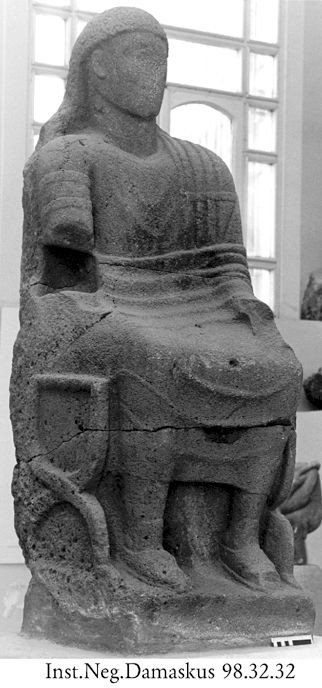The Sculptures and Figural Reliefs from Qanawa/Hauran
The project is designed to investigate and publish the sculpture and figural reliefs from Qanawat, the ancient Kanatha, one oft he most important member cities oft he decapolis in the South of Syria. It deals with the characteristic basalt sculpture from local volcanic rock, whose peculiar aesthetics, vocabulary and iconography refer to a concise local identity. These approximately 240 objects from Kanawat contain old finds, as well as new finds from the recent survey, excavation and documentation works that are conducted by the DAI Damaskus and the Archaeological Institute of the University of Cologne.
They give a representative spectrum of the qanathene art production from late Hellenism to late imperial age and they contain interesting example of ideal and portrait sculpture. The exceptionally large array of sculptures contains altars, busts, standing and sitting sculptures, armoured and equestrian statues as well as several animal statues and statuettes ranging from larger than life to small scale figures. The recording of the material is mostly completed and accessible through an image database. Aside from the stylistic and chronological development, the research concentrates also on gaining insight about local workshops and the functions of southern Syrian basalt sculpture in the ancient city. Alongside the iconographic analysis, especially the specific peculiarities of the topics and motifs are analyzed and the influence of Roman culture on local workmanship examined. A comprehensive evaluation of sculpture and figural reliefs from Qanawats in the cultural context of Syria is to be given.
Supervision: Dr. Heike Laxander

